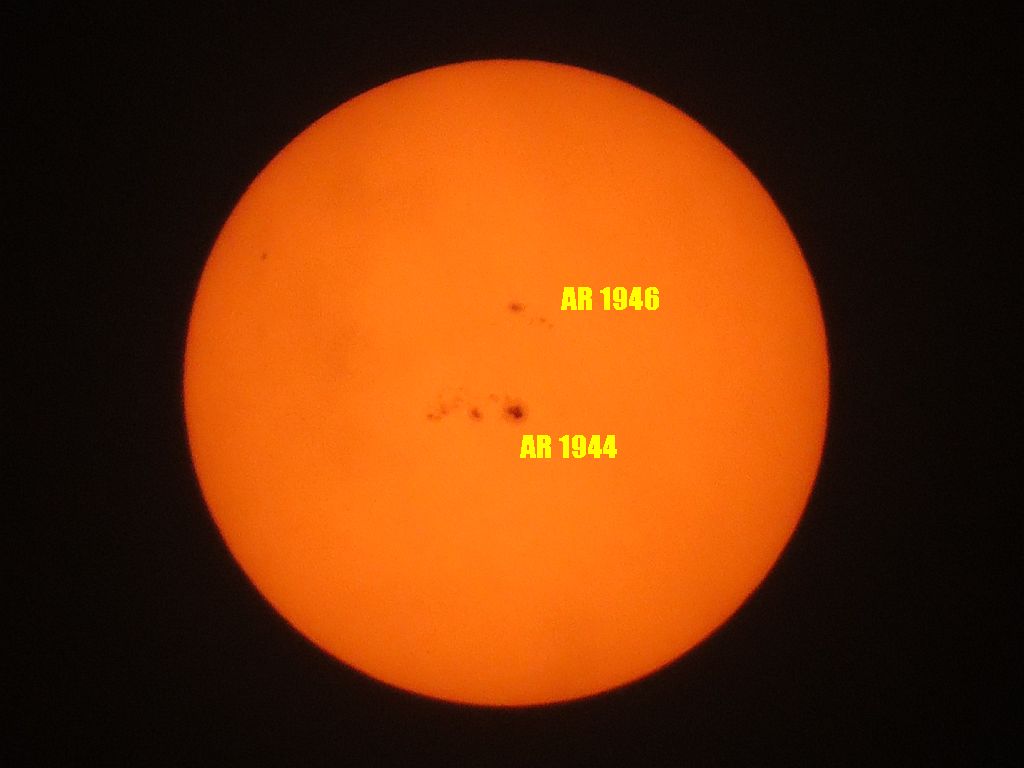One of the biggest sunspots in years is crossing the center of the solar disk, putting Earth in the way of potential eruptions. The sprawling sunspot contains dozens of dark cores, the largest big enough to swallow Earth three times over. This makes it an easy target for amateur solar telescopes — or even regular cameras.
I took this photo this morning using my Canon SX40 camera with a Rainbow Symphony solar filter. I added the sunspot group designations to the original photo. Click on the image to enlarge.
Update from NOAA/NWS:
2014-01-09 00:03 UTC S3 (Strong) Solar Radiation Storm In Progress
The ongoing S2 (Moderate) Solar Radiation Storm has intensified to an S3 (Strong) event as of 2320 UTC (6:20 p.m. EST) today, January 8. Protons should stay at this same approximate level for the next few hours, then likely take another jump with the passage of the shock ahead of the CME, expected to occur around 0900 UTC (4:00 a.m. EST) tomorrow, January 9. However, this increase is not expected to exceed the S3 level. The CME is forecast to set off G3 (Strong) Geomagnetic Storm activity through January 9 and 10. Aurora watchers should be ready; updates here as things unfold.


